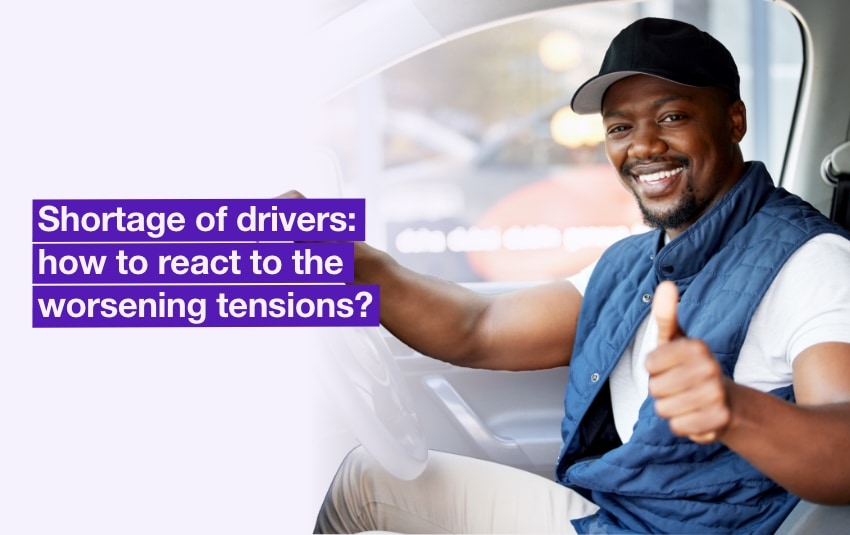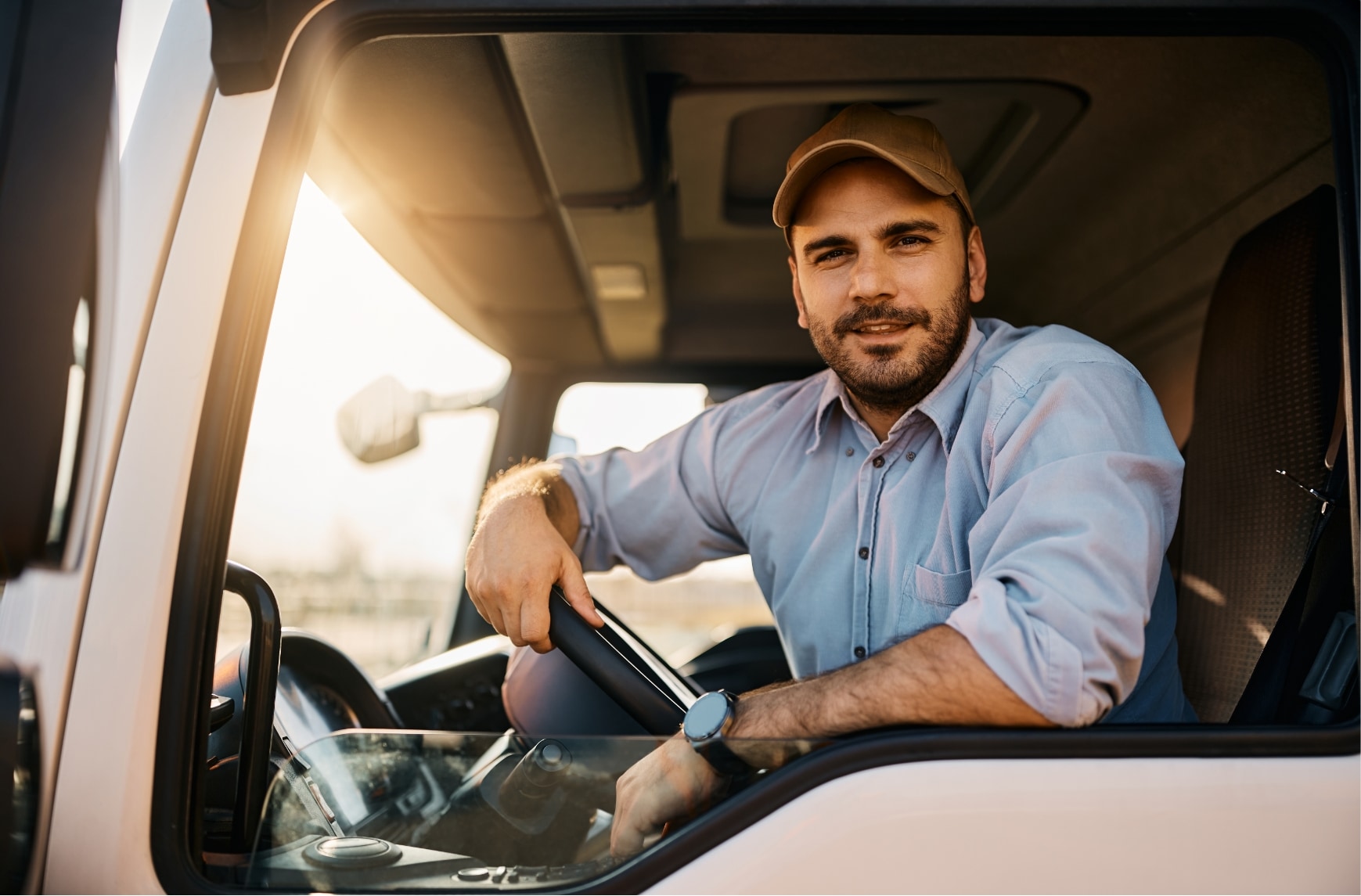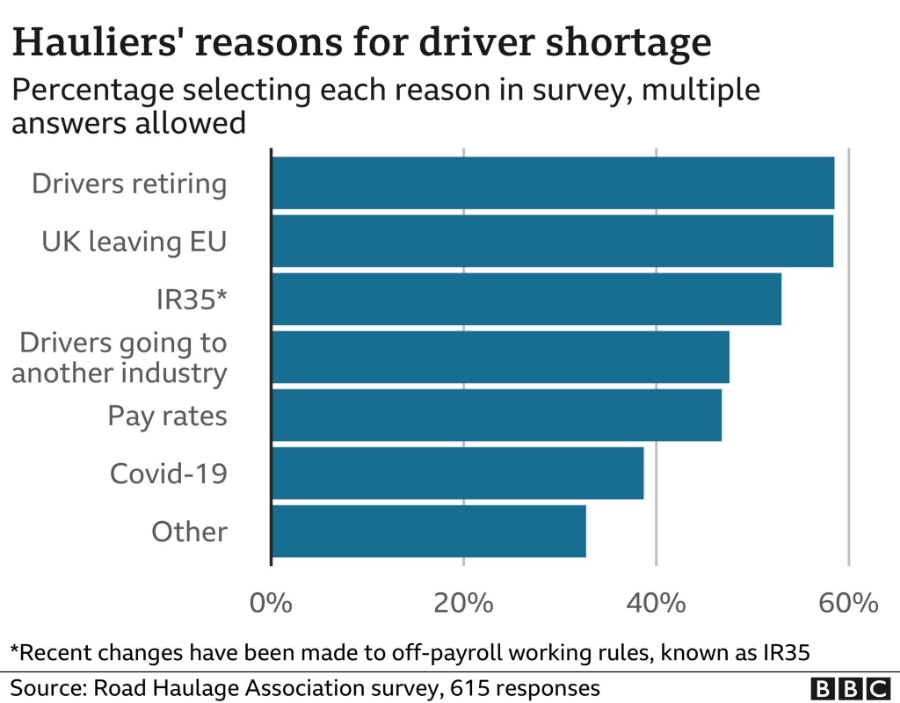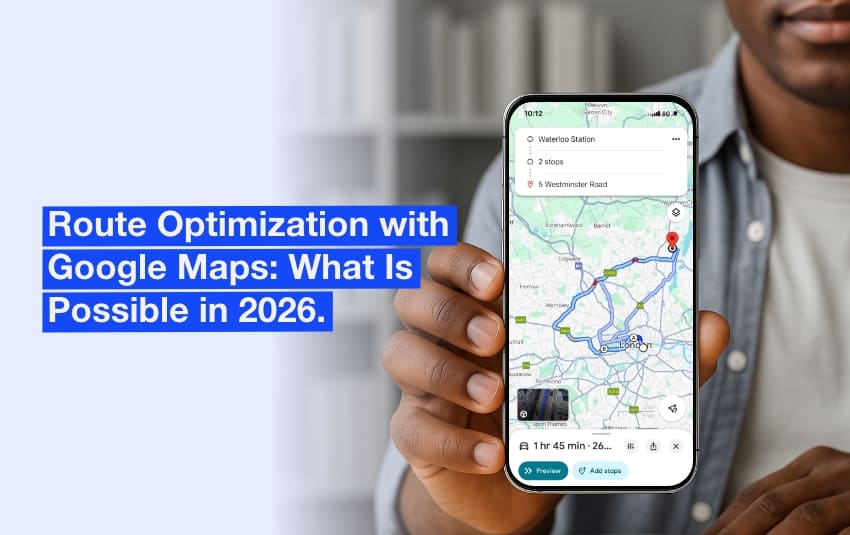Shortage of drivers: how to react to the worsening tensions?

Not a week goes by without a new report about the shortage of drivers in the UK, as well as in Europe. All roles in the transport and logistics industries have been impacted amongst ongoing crises: delivery drivers, truck drivers, bus drivers, public transport drivers, etc.
For contractors to operators alike, the situation is critical and has resulted in diminishing business partnerships and stock shortages.
AnsRoute has therefore compiled 9 effective solutions to help you fill vacancies… and how to react before it’s too late!
Table of contents
- Vehicle Driver Shortage: a crisis that is here to stay
- The 8 operational solutions to attract and hire drivers
- Significantly increase salaries
- Introduce incentive bonuses
- Improve the communication of your business
- Hire foreign drivers
- Facilitate access to training
- Develop management methods
- Reduce stress and workload using digital tools
- Make customers and recipients aware of the conditions under which drivers are received
Faced with a shortage of truck drivers, transport companies are adopting strategies to retain these professionals. Incentives and digital tools are making logistics jobs more attractive. Recruiting qualified delivery drivers helps maintain a smooth supply chain.
Vehicle Driver Shortage: a crisis that is here to stay
In their latest annual statement published in June 2022, the IRU (The International Road Transport Union) has signalled some alarming statistics about the ongoing shortage.
Globally, 2.6 million driver jobs were unfilled in 2021. In Europe, the IRU estimates that 400,000 driver positions remain vacant, including 100,000 in the UK alone. But the most worrying thing is that the recruitment difficulties promise to be lasting.
According to projections, the shortage of drivers in Europe is set to worsen by another 40%, due in particular to a very unfavourable demographic situation. Only 6 to 7% of drivers are under 25, and only 3% of workers in this sector are women (1% in the UK).
Tough jobs with chronic labour shortages
The RHA (Road Haulage Association) in the UK confirms the gravity of the crisis and tries to analyse its causes. In its report about the Driver Shortages, the RHA highlights an increased shortage of HGV (Heavy Goods Vehicle) drivers jobs, which were already in a delicate situation in previous years. Covid-19 and Brexit have of course not helped matters! The RHA assessed in a survey the reasons for driver shortage:
- Covid-19: Many drivers went back to their country of origin during lockdowns and the majority of them didn’t return.
- Brexit: Many European drivers decided to return to their home country, due to the uncertainty around working right under Brexit. These drivers have been unable to come back to the UK. Furthermore, the new measures and the decline in the value of the pound against the euro have made the UK less attractive.
- Retiring drivers: The average age of an HGV driver in the UK is 55 with less than 1% under the age of 25. The lack of activity due to Covid-19 drove the ageing workforce to retire earlier or search for less demanding jobs.
- Test shortage: During a typical year, 72,000 candidates train to become HGV drivers. These driving test slots were dramatically reduced due to the closure of offices during the lockdown, thus leading to a loss of over 30,000.
- IR35: Recent reforms around the payroll tax scheme for limited companies made it more expensive for drivers to work in the UK.
The strategic role of drivers for the entire supply chain
Without a rapid and voluntary reaction from all involved parties, charterers, and shippers included, many supply chains are at risk with bad repercussions for the entire market:
- Stock shortages in important sectors, such as the food, distribution, and health industries.
- Shut down of production lines due to lack of raw materials or spare parts.
- Price increases on products that can be passed on and weigh down transporters, etc.
This insightful article from the Guardian highlights how McDonald’s ran out of milkshakes for 1,250 outlets in the UK due to a shortage of HGV drivers. The famous fast-food chain had to remove its key item from the menu for a few weeks. An example of many that show the importance of drivers and the impact the shortage can have on both retailers and consumers!

Delivery drivers play a strategic role in the supply chain.
The 8 operational solutions to attract and hire drivers
To guide you in your thinking, we have listed 9 types of solutions, already successfully applied by others. Ideally, these will be implemented in partnership with your HR department. Provided you have one, which is far from being the case for all companies in the sector.
Significantly increase salaries
Evidently this measure is extremely difficult to deploy in the current context, as many carriers are already caught between soaring fuel costs amongst other costs (spare parts, electricity, tolls, etc). However, it is difficult to improve the attractiveness of truck driver or delivery driver jobs without going through this.
The solution of raising wages is far from magical, however, and it is insufficient as a standalone solution. Above all, it should not prevent you from in-depth reflection on the other issues inherent in the profession.

The operational solutions to attract and hire delivery drivers.
Introduce incentive bonuses
Faced with a dramatic shortage which prevents it from providing more than a quarter of the services in intramural Paris, the RATP (the Parisian public transport authority) has introduced co-optation bonuses. All RATP employees who submit a CV leading to recruitment now receive €150, an amount which can be doubled if the new driver is still in post a year later. Flixbus, the German coach travel specialist, achieves 1 in 5 hires thanks to referrals. In a rush to stock shelves, Tesco offers £1,000 sign-on fees for new drivers. Nonetheless, these financial incentives aren’t just for mass transit giants. In the logistics sector, small regional French companies, such as the Mousset Group and Jacot Transport, also offer co-option bonuses for all successful referrals.
There are many other solutions for motivating and retaining teams: long-distance bonuses, seniority bonuses, payment of hotel stays, participation in results, etc.
Improve the communication of your business
All players in the sector agree on the poor image from which their profession suffers. No, not all truck drivers are bullies! And yes, some truck drivers assigned to regional routes go home every evening!
Simple and inexpensive actions, however, can contribute to breaking the clichés:
- Adopt positive communication on social networks.
- And publish your job offers there!
- Organise open days.
- Participate in career forums or meetings in schools.
- Obtain mentions from local media, etc.
Internal communication should not be neglected either. It is all the more important since your drivers are not often physically together. Again, there is no need to deploy complex devices to obtain results. A simple WhatsApp group or a Telegram messaging loop can be enough to strengthen team cohesion.
Most software solutions for carriers also include valuable features to streamline communication and reduce driver stress. AntsRoute includes, for example, a lot of information and notifications to facilitate the completion of routes: push notifications in the event of last-minute changes, useful documents available as attachments, proofs of delivery and dematerialized comments, etc.
Hire foreign drivers
Some companies, like Keolis, rely on associations specialising in supporting refugees to integrate new foreign drivers, Ukrainians for example. More recently, the UK government granted 5,000 temporary visas for HGV drivers to help in the short term.
The European Commission is also planning to make it easier to hire drivers from third countries from 2023. A number of initiatives are planned, including an online recruitment platform and a system of digital work visas to encourage the legal immigration of drivers trained outside Europe, in Morocco, Egypt, Tunisia, etc.
Facilitate access to training
To sustainably combat the shortage of drivers, large groups are often times mobilising considerable financial resources. A good example is the transport company Mauffrey which has invested 20 million euros to create its own training centre, intended to accommodate 250 new recruits yearly coming from all over France.
Some companies try to retain their employees by financing training in logistics or obtaining a new licence.
Develop management methods
Some operators and team leaders are sometimes destabilised, even annoyed, when faced with the demands of new generations of drivers: demanding better work-life balance, refusing staggered or split work hours, etc. Others, well aware of the very unbalanced relationship between supply and demand, try to be pragmatic in order to retain employees they’ve recruited with so much difficulty.
In any case, it is better to negotiate realistic adjustments with your drivers, rather than seeing them slip away to your competitors:
- A more caring and serene management.
- Better organisation of shifts to reduce the difficulty.
- Schedules adapted to the constraints of the drivers available as soon as possible, etc.
Reduce stress and workload using digital tools
Most professional software offer you valuable tools to improve team management, and therefore retain them. At AntsRoute our route optimisation solution, for example, includes many features to guide and support your delivery drivers in the field.
- Plan delivery rounds taking into account the place of residence of each driver.
- Organise the loading of the vehicle according to the planned circuit.
- Limit the number of kilometres travelled, and therefore the time spent on the road.
- Facilitate direct communication with the end customer.
- Schedule a next appointment on the application when the delivery person is still with the customer.
- Guide the driver in real-time in case of last-minute changes, etc.

The AntsRoute mobile application makes life easier for delivery drivers.
Make customers and recipients aware of the conditions under which drivers are received
This last lever of action will take considerable time. But properly implemented, it contributes to a marked improvement in the working conditions of drivers, and therefore to their loyalty.
We’ve all occasionally been victims of an unexpectedly long delay that hampers other appointments.
Here again, your CRM or route optimisation software can be of great help to you. If you haven’t already done so, we strongly advise you to take some time to:
- Fill in the opening or reception hours of each recipient.
- Set up the sending of automatic notifications by email or text, which are very effective in reducing the rate of absence and encouraging recipients to better organise themselves.
- Communicate with your most frequent customers to come up with more adapted responses according to their sector of activity: contributing to loading and unloading operations, expanding reception slots, etc.
Do you want to test our route optimisation solution for free to improve the working conditions of your drivers and increase their loyalty? Just register here!
Free 7-day trial | No credit card required
Contenu
- Vehicle Driver Shortage: a crisis that is here to stay
- Tough jobs with chronic labour shortages
- The strategic role of drivers for the entire supply chain
- The 8 operational solutions to attract and hire drivers
- Significantly increase salaries
- Introduce incentive bonuses
- Improve the communication of your business
- Hire foreign drivers
- Facilitate access to training
- Develop management methods
- Reduce stress and workload using digital tools
- Make customers and recipients aware of the conditions under which drivers are received








